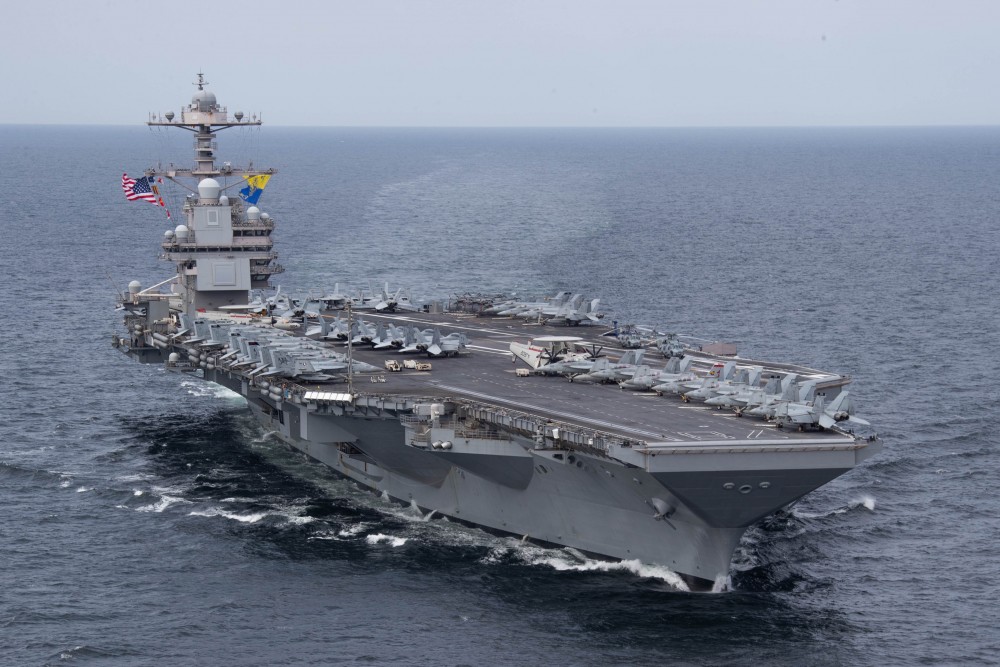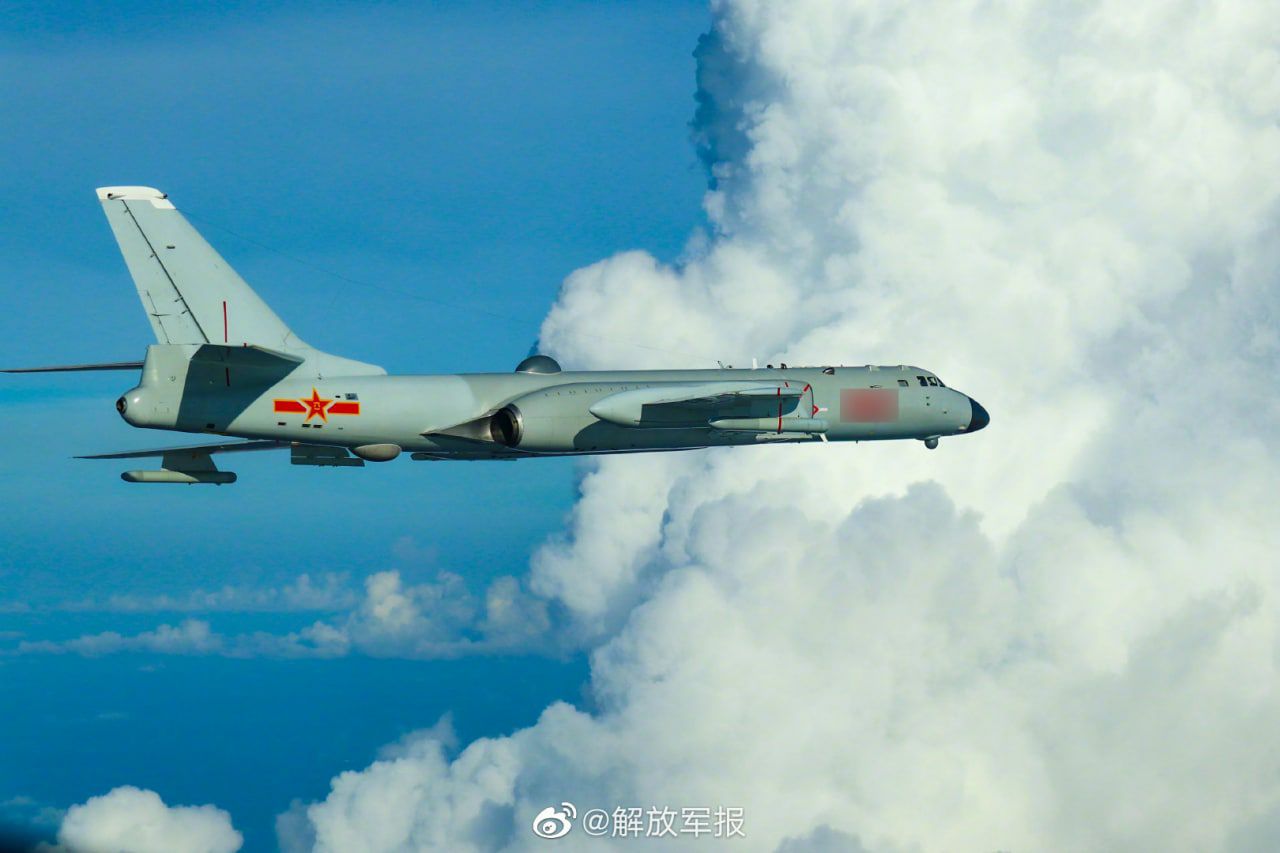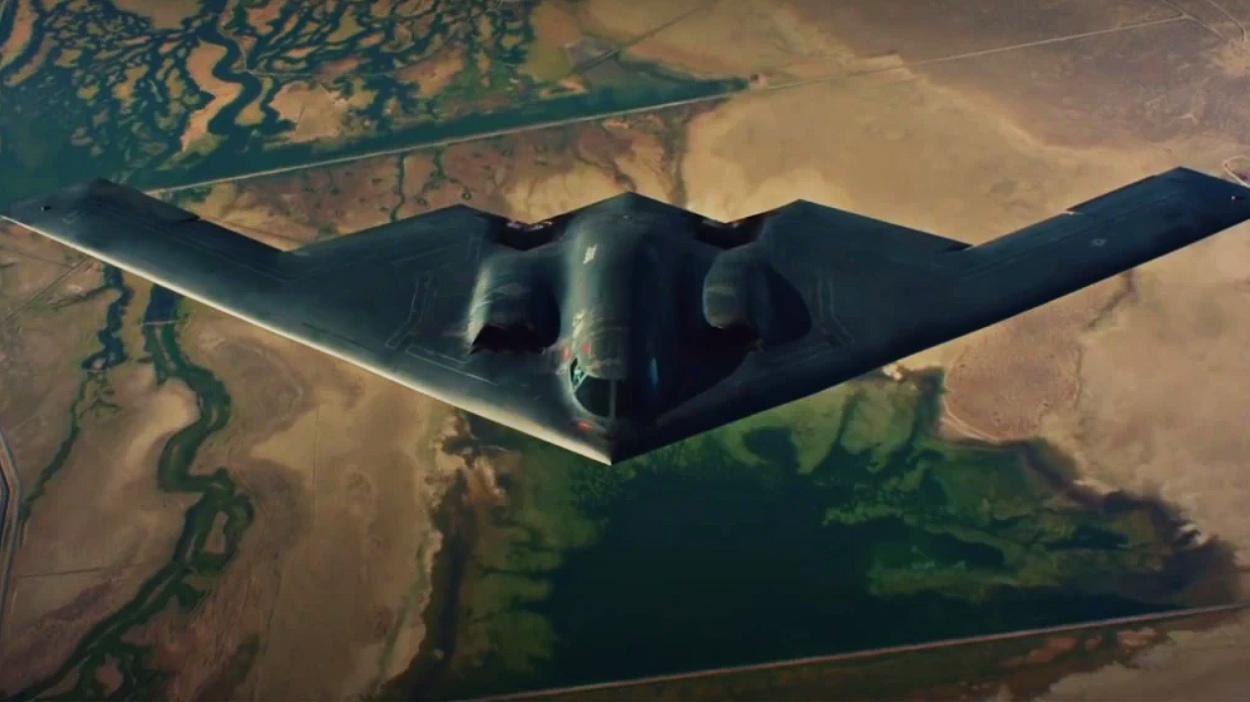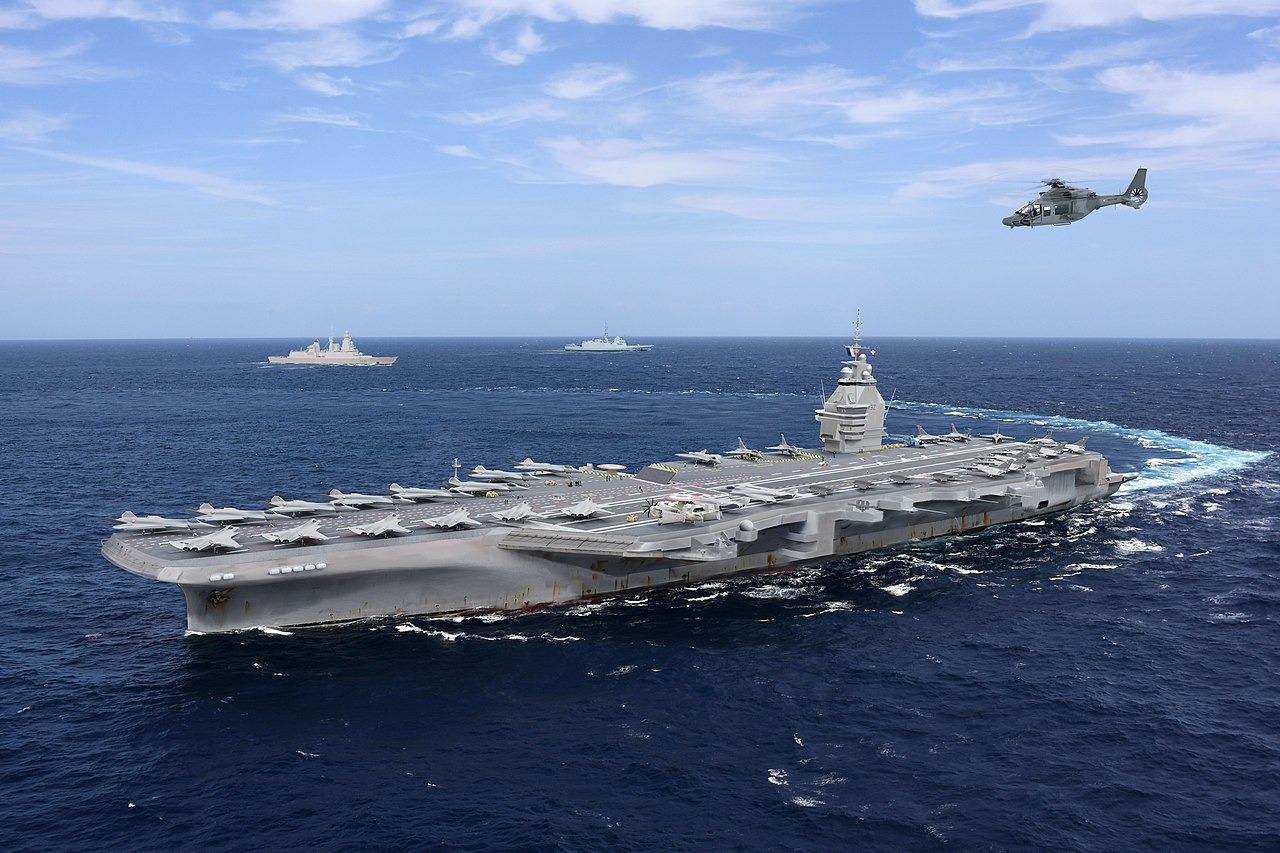No Aircraft Carrier, Chinese Hypersonic Missile Threat Revives The Need Of Strategic Bombers In USAF: OPED
Summary
The article discusses the changing dynamics of military power due to the development of hypersonic anti-ship missiles by China and Russia, which pose a significant threat to U.S. aircraft carriers. Key points:
- The vulnerability of aircraft carriers has led the U.S. to reconsider the importance of strategic bombers.
- China has a limited number of outdated H-6 bombers and is developing the H-20, while Russia has a formidable fleet of Tu-160, Tu-95, and Tu-22 bombers.
- The U.S. operates B-52s, B-2s, and plans to acquire B-21s, along with recalling B-1 Lancers from storage.
- India lacks strategic bombers and its aircraft carriers are air defense ships, vulnerable to Pakistani and potential Chinese threats.
Carrier v. Bomber
The bomber-carrier tradeoff is a complex issue that military strategists must consider when deciding how to allocate resources and develop force structures. Here are some key points to consider:
1. Range and flexibility: Strategic bombers have a much longer range than carrier-based aircraft, allowing them to strike targets far from their bases without the need for a mobile platform like an aircraft carrier. This gives bombers greater flexibility in terms of mission planning and execution.
2. Vulnerability: Aircraft carriers are increasingly vulnerable to hypersonic anti-ship missiles, as mentioned in the article. A successful strike on a carrier could result in the loss of a significant portion of a nation's naval air power. In contrast, bombers are land-based and can be dispersed across multiple locations, making them less vulnerable to a single attack.
3. Cost: Building and maintaining aircraft carriers is extremely expensive, with the latest U.S. Ford-class carriers costing over $13 billion each. While bombers are also costly, they are generally less expensive than carriers and their associated support ships.
4. Power projection: Aircraft carriers are powerful symbols of a nation's military might and ability to project power globally. The presence of a carrier strike group in a region can serve as a deterrent and provide a quick response to crises. Bombers, while capable of long-range strikes, do not have the same visible presence as carriers.
5. Versatility: Carriers are versatile platforms that can carry a variety of aircraft for different missions, including air superiority, ground attack, and anti-submarine warfare. Bombers are primarily focused on strike missions and may have less flexibility in terms of mission types.
Ultimately, the choice between prioritizing bombers or carriers depends on a nation's strategic objectives, threat perceptions, and available resources. A balanced force structure that includes both bombers and carriers may provide the greatest flexibility and resilience in the face of evolving threats.
No Aircraft Carrier, Chinese Hypersonic Missile Threat Revives The Need Of Strategic Bombers In USAF: OPED
OPED BY: Gp Capt TP Srivastava
With the development of ‘Carrier Killer’ hypersonic missiles, the United States has realized that ultra-large aircraft carriers like the Ford class can be struck down with two such missiles. The way out, then, is to utilize strategic bombers, which have seen little action since the disintegration of the USSR.
Background
Anti-ship hypersonic missiles made news around 2010 when China announced the development of a missile that could travel almost 1000 km and hit targets with pinpoint accuracy.
China and Russia have taken giant strides in the past decade and now have operational hypersonic missiles. The US, however, has lagged with the initial test launches, not achieving the desired results.
Numerous studies have concluded that hits by two such missiles would be enough to sink the ultra-large Ford class of the US Navy Aircraft Carriers. At present, these studies only remain on paper. Aircraft Carriers are the most potent weapon platforms capable of global surveillance, provided the Carrier Battle Group (CBG) is adequately supported.
The US Navy is the only naval force with genuine strike carriers supported by modern platforms. It is capable of operating anywhere in the world.
China, with two carriers (third undergoing sea trials), and Russia, with one ‘limping’ aircraft carrier, are no match for the US Navy carrier fleet operating 11 Carrier Battle Groups (CGB).
Chinese CBGs are not capable of operating in hostile air defense environments. They will, therefore, be confined to the South China Sea region — at least in the foreseeable future.
Other nations possessing aircraft carriers, including India, are operationally in the ‘also ran’ category. These carriers are air defense ships and cannot operate independently due to a lack of support infrastructure and platforms. French and UK aircraft carriers mostly operate as adjuncts to US Navy CBGs.
The Chinese third aircraft carrier, Fujian, an 80,000-ton ship, is undergoing sea trials. While the development of the carrier as a platform is commendable, the more substantive issue is: Will China have a proven long-range fighter or carrier-borne Airborne Early Warning/Airborne Warning and Control System (AEW/AWACS) in the foreseeable future?
Indian military strategists have not yet been able to get out of the ‘Dragon Mania’ and want to ape the Chinese, be it in the domain of altering the regional command structure or building aircraft carriers.
How and why Indian military strategists ignore the abysmally low submarine capability is baffling. China launched the Pakistan Navy’s submarine program, HANGOR, on April 26, 2024, and promises to deliver eight submarines by the end of 2028.
India’s P-75I submarine project is still a work in progress. Conceived in 1997, P-75I’s objective was to procure a class of six conventionally-powered attack submarines for the Indian Navy submarine arm as a replacement for the force’s Sindhughosh-class submarines.
Rise Of Supercarriers; Demise Of Strategic Bombers
The US Navy undertook a massive modernization program of inducting super-carriers during the peak of the Cold War, which could roam the oceans at will and meet any threat.
The experiences of the Korean and the Vietnam wars resulted in the US deciding to forego the option of placing ‘boots’ in hostile territory.
CBGs led by strike carriers could reach any/every part of the world. China and Russia could not match the financial and technological muscle of the USA in this field.
Russia compensated for this shortcoming by producing large fleets of strategic bombers. China, too, followed and is trying to catch up. Today, while Russia has significant numbers of strategic bombers, China has very few.
The US Navy currently has 11 operational CBGs. With every new CBG becoming operational that can reach the enemy’s doorsteps, the manned bomber somewhat started losing its value.
The US Air Force decided to send the B-1s to hibernation even though the B-21 was still not operational. The B-52s also headed for retirement. However, the development of anti-shipping hypersonic missiles in the last few years has altered the entire scenario.

The most potent weapon platform, the carrier, has been threatened by these missiles, which has resulted in a rethink about the survivability of carriers. In the rapidly changing weapons development scenario, the carrier’s vulnerability has forced the US to rethink the deployment philosophy of the CBG.
While countermeasures are being developed to protect the CBG, the means to maintain global supremacy have forced the USA to reconsider and reevaluate the reduction of the strategic bomber fleet.
Importance Of Strategic Bombers
Strategic Bombers constitute a formidable human-controlled counterpart of the nuclear Triad of all major nuclear weapon states: China, Russia, and the USA in particular.
The remaining parts of the Triad are nuclear-tipped missiles, ICBMs, and SLBMs (Intercontinental Ballistic Missiles and Submarine-launched Ballistic Missiles). A manned delivery system enables the decision-maker to alter/change/modify the mission objectives/targets any time before the pilot in the cockpit releases the weapon.
In the case of missiles, this is a vital military option of enormous politico-military significance. Hence, the importance of the manned strategic bomber over others is vital to the TRIAD.
A combination of a formidable fleet of strategic bombers and 11 operational CBGs has provided the USA with the much-needed military muscle to be the top military power.
During the height of the Cold War, the US and the then USSR had strategic bombers loaded with live nukes in the air on a 24×7 basis. The practice was gradually reduced after ICBMs were deployed in large numbers, and it became “extinct” after the break-up of the USSR.
Strategic Bombers Of China, Russia, USA
China
Today, the H-6 is the only operational strategic bomber in the People’s Liberation Army Air Force (PLAAF). According to the latest information, China has about 20 HONG-6 (H-6) nuclear-capable bombers, which have an extremely limited operational radius of action: about 3000 km.
The H-6 variant with a midair refueling facility, the H-6N, has also been developed. China is trying to develop a more modern strategic bomber, the H-20, which might have a combat radius of action of around 5,000 km and a midair refueling facility, too.
The H-6, a derivative of the Soviet Tu-16, is an outdated machine. While it is capable of reaching Indian targets from mainland China, its survivability is doubtful. Hence, it might be capable of a ‘one-way’ mission.

However, the PLAAF has embarked upon a radical development program and has fitted the H-6 with anti-shipping (H-6J), cruise missiles (H-6M), and ballistic missiles (H-6N).
Missile-carrying H-6 variants do not carry any bombs due to load restrictions. China is quite conscious of its inability to deploy the H-6 as a strategic bomber, even against India, because it cannot penetrate and survive India’s air defense setup. Technically, it is a nuclear-capable bomber, but it cannot be used in that role for the reasons stated above.
The H-20 is merely a program on the drawing board. Not much is known about its capability, viz weapon load, stealth, ECM/ECCM (Electronic Countermeasures/ Electronic Counter-Countermeasures) suites, etc. Even if China proceeds to enhance the H-20, it is at least 15 years away (2040) from deploying it operationally.
Russia
The Russian Strategic Bomber fleet — a formidable fleet with multirole capability — comprises Tu-160 variants (17), Tu-95 (55) and Tu-22s (66). The Tu-22 has also been developed for long-range anti-shipping strikes.
However, there is a mismatch of actual holdings. Information exchanged between Russia and the USA in 2017 under the START treaty (the Strategic Arms Reduction Treaty, a bilateral treaty between the United States and the Soviet Union on reducing and limiting strategic offensive arms) placed the numbers as 55 Tu-95s and 13 Tu-160s.
The Supersonic Tu-160 is primarily used for long-range missions that demand penetration of potent air defense environments.
The Tu-95, the only turboprop strategic bomber, is utilized to launch ALCMs (Air-Launched Cruise Missiles) from stand-off distances. The Tu-22 is capable of carrying nuclear bombs as well as long-range supersonic cruise missiles.
In addition, the Tu-22 is equipped with Kh-22/32 long-range, supersonic antishipping cruise missiles specifically aimed to engage US Navy supercarriers.
USA
B-52s: The USAF operates 75 B-52s.
B-2s: The USAF operates 21 B-2s.
B-21s: The USAF plans to acquire 145 stealthy B-21s. This statement was made by Frank Kendall, the Secretary of the Air Force under US President Joe Biden.
Impending Reinduction of B-1s: The USAF is recalling unspecified numbers of B-1 Lancers. These are capable of carrying anti-shipping missiles as well as cruise missiles, along with free-fall conventional bombs. Currently, the USAF has 45 B-1 Lancers in storage.
The USAF, then, has nearly 300 operational strategic bombers in its inventory.

Revival Of Strategic Bombers
The threat posed by hypersonic anti-ship missiles, which can be launched from airborne platforms from more than 1000 km away from a CBG, has made the previously formidable super-carriers vulnerable.
Operational missions, which could be accomplished by a CBG operating near the target area, would need either a ballistic missile or a manned aerial platform. Most modern fighters in the world would not meet this requirement.
Hence, strategic bombers are vital and are capable of carrying adequate weapons over great distances.
The first indication that the USA has decided to fall back on Strategic Bombers was when the USAF decided to refurbish the oldest B-52 bombers. The existing plans are to keep the B-52s in service for around 100 years since it flew for the first time nearly six decades ago. China and Russia, too, are trying to maintain/develop strategic bombers.
New Aircraft Carriers: France & USA
The US is planning to add more aircraft carriers to its already existing fleet (the USA plans to produce two more: the Enterprise by 2028 and the Doris Miller by 2032).
France, too, plans to produce a ‘near’ Ford-class aircraft carrier before 2040. France has embarked on the PANG (Porte Avion Nouvelle Génération, a futuristic nuclear-powered aircraft carrier set to replace the current Charles de Gaulle) Aircraft Carrier Program.

India’s future acquisitions: Strategic bombers, aircraft carriers and submarines
Strategic Bombers: The Indian military has never been equipped with strategic bombers due to the following reasons;
- All fighter aircraft acquisitions post-1962 have been from foreign vendors, mainly Russia (then USSR).
- No strategic bomber was ever offered to India.
- The HAL-DRDO combine was/is incapable of producing a 100% indigenous fighter aircraft. Strategic bomber production has not even been considered.
- Most importantly, the Indian Air Force never felt the need to acquire strategic bombers because of the operational tasks it had to meet. The existing fighters more than met the operational requirements. Indeed, there have been unconfirmed reports of Russia offering Tu-22s.
Aircraft carriers: The Indian military operates two aircraft carriers equipped with MiG-29K. The impending acquisition of the Rafale-M will add substantive firepower. Both aircraft carriers are air defense ships and cannot operate against a nation with formidable air power.
The Indian carriers will remain prime targets for the Pakistan Air Force (PAF) and the Pakistan Navy. Although Pakistan does not possess long-range hypersonic anti-shipping missiles, China could provide these in the future or in actual war conditions against Pakistan.
Chinese aircraft carriers do not pose any threat to India, at least as yet, because the Chinese CBG will be highly vulnerable if it ventures into the Bay of Bengal through the Malacca Straits.
A few Indian strategists have opined that India should consider collaborating with France for its third aircraft carrier. Besides the huge cost (USD 5 billion or more), Indian CBGs will remain vulnerable because of the absence of carrier-borne AEW/AWACS aircraft. India is unlikely to possess such platforms in the near future.
Acquiring or planning to acquire yet another ‘white elephant’ will not be in the interest of the Indian military because it will not add any muscle power. In any full-fledged war with Pakistan, our present carriers will be a liability rather than an asset. We must keep them well out of the radius of action of F-16s equipped with anti-shipping missiles.
Conclusion
No country can afford to lose an aircraft carrier, whether the USA, China, or India. If the claims about the range and accuracy of hypersonic anti-ship missiles possessed by China and Russia are indeed true, then no aircraft carriers or support ships are safe. All surface ships are vulnerable. The attacks by the Houthi rebels on US/NATO ships in the Red Sea are a trailer.
The Sea Control vs. Sea Denial debate is as old as the maritime military. Surface shipping has never been threatened in the manner it has recently after hypersonic anti-shipping missiles appeared on the scene.
Hence, sea control by formidable CBGs might have become a thing of the past. However, sea control can still be exercised far more effectively by the silent killers, the submarines, which are the prime weapon platform for sea denial.
Unfortunately, the Indian submarine fleet is not only primitive and outdated but also limited in numbers. There is an urgent need to double the strength from the existing 16 in the next 10 years.
The only silver lining is the presence of large numbers of P 8i with the Indian Military, which can seek and hunt the silent killers. It is a capability that neither China nor Pakistan has. The Chinese proposal to equip the Pak Navy with eight HANGOR class submarines by 2028 will alter the balance of power in the Indian Ocean Region.
Shall we shift our focus from acquiring unwieldy and operationally unsuitable aircraft carriers to ramp up the submarine fleet as fast as possible? We can learn from the USA that aircraft carriers are vulnerable platforms. For this reason, the USAF is bringing its strategic bombers back into operation from the ‘Boneyard.’
- Gp Cpt TP Srivastava (Retd) is an ex-NDA who flew MiG-21 and 29. He is a qualified flying instructor. He commanded the MiG-21 squadron. He is a directing staff at DSSC Wellington and chief instructor at the College of Air Warfare.
- VIEWS PERSONAL OF THE AUTHOR
- Follow EurAsian Times on Google News


No comments:
Post a Comment